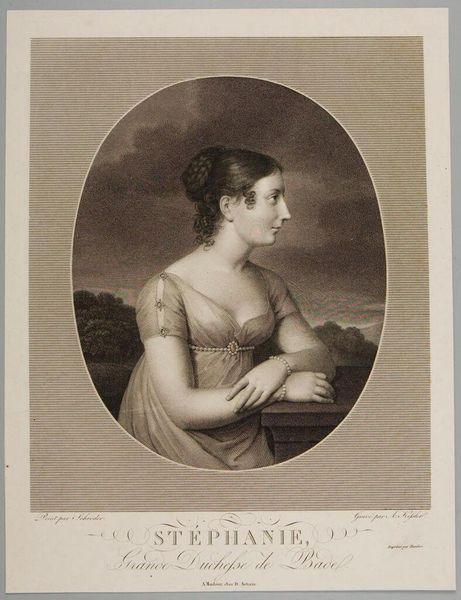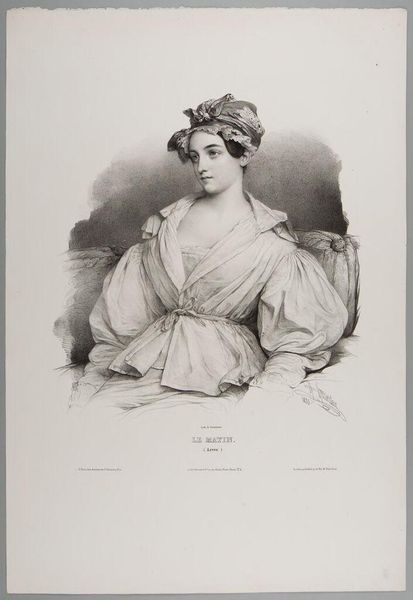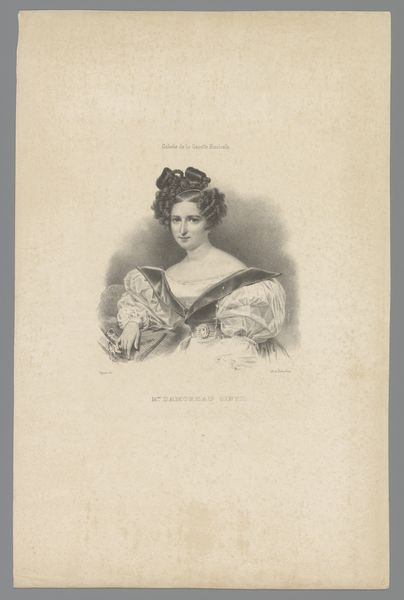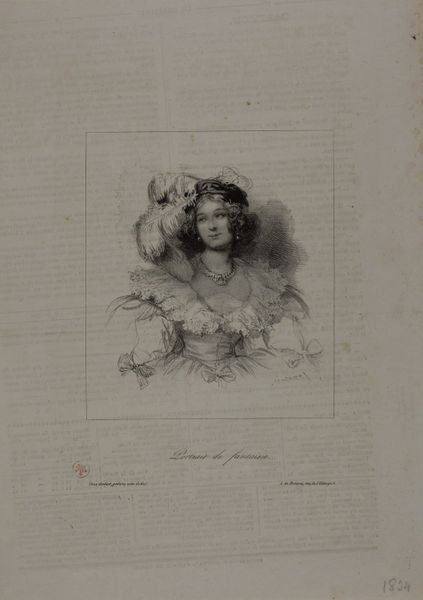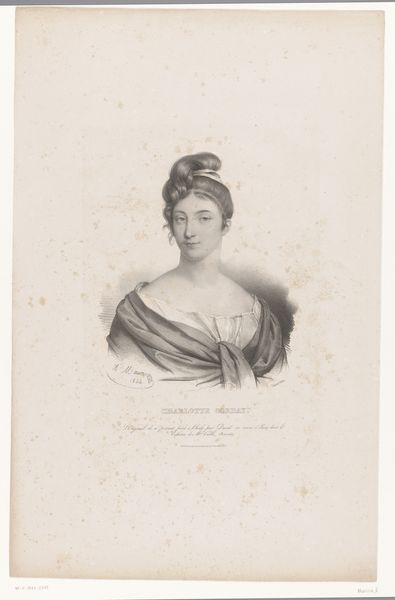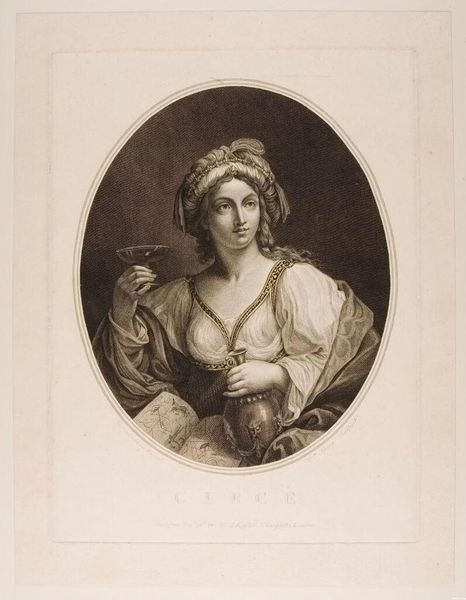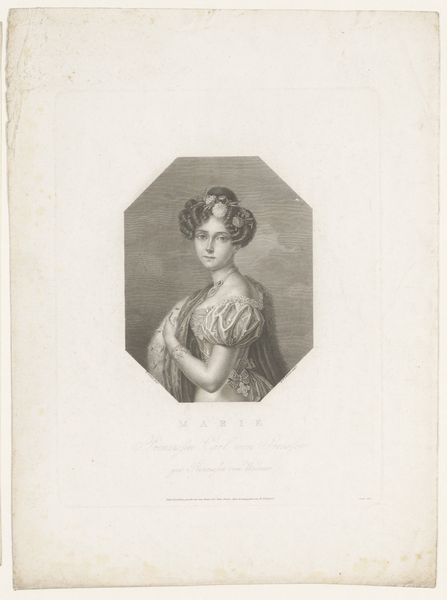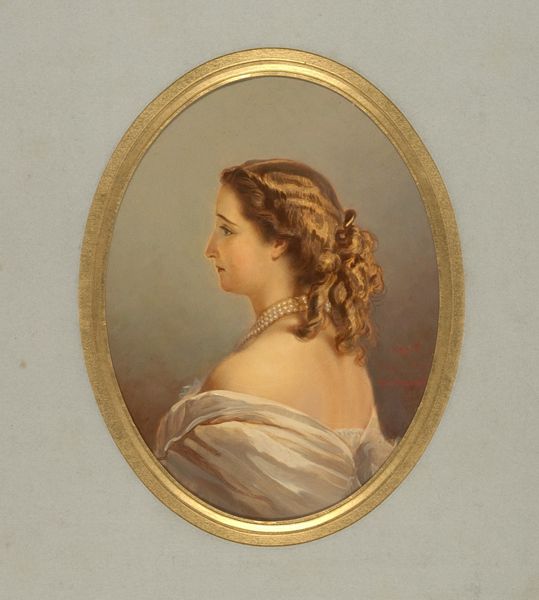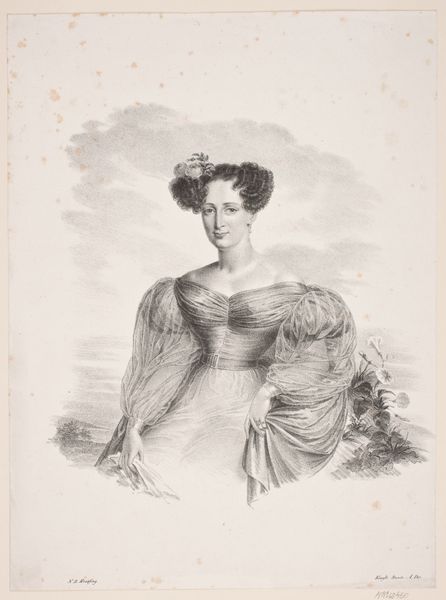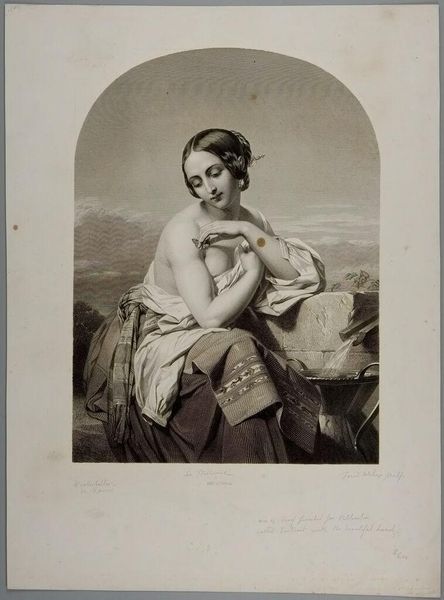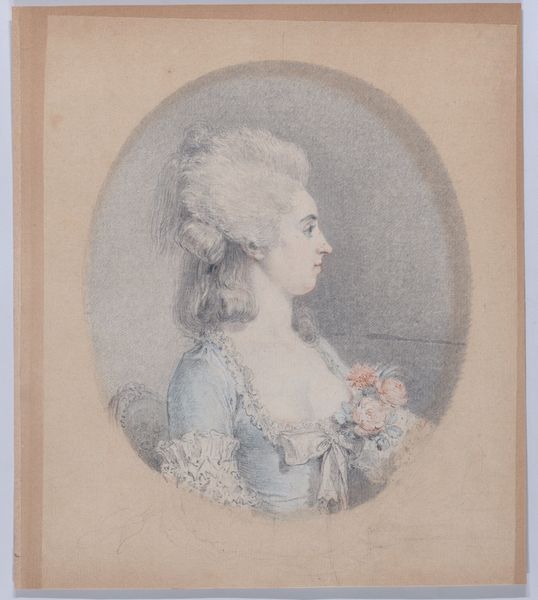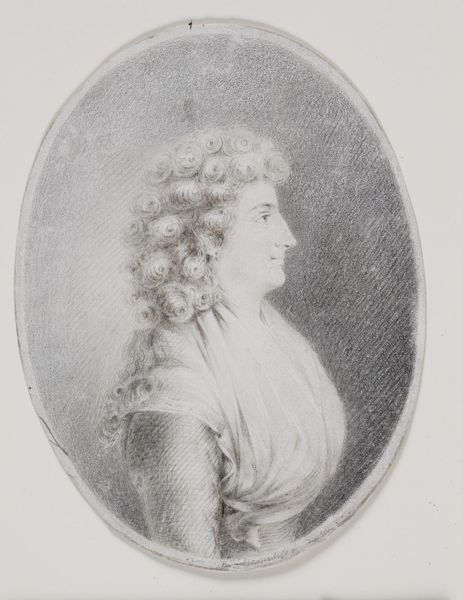
#
portrait
#
neoclacissism
# print
#
history-painting
Dimensions: 270 mm (height) x 210 mm (width) (netto)
Heinrich Sintzenich created ‘Tragedy’, a stipple engraving, during the late 18th or early 19th century. Stipple engraving is a printmaking technique involving thousands of tiny dots to build up areas of light and shadow. Look closely, and you'll see the effect. Sintzenich has used this laborious method to give the image a soft, almost ethereal quality. The texture is very different from a line engraving, which is made of continuous marks. The result is a delicate and subtle image, ideally suited to the Neoclassical style that was in vogue at the time. The print would have been made by a skilled artisan, likely working long hours in a print shop. The cost of this labor would have made it a relatively expensive object, available only to the wealthy. By considering the materials, the making, and the context of 'Tragedy', we can appreciate the full artistry of Sintzenich’s print. It embodies a specific moment in time, revealing complex hierarchies of skill, labor, and consumption.
Comments
No comments
Be the first to comment and join the conversation on the ultimate creative platform.
